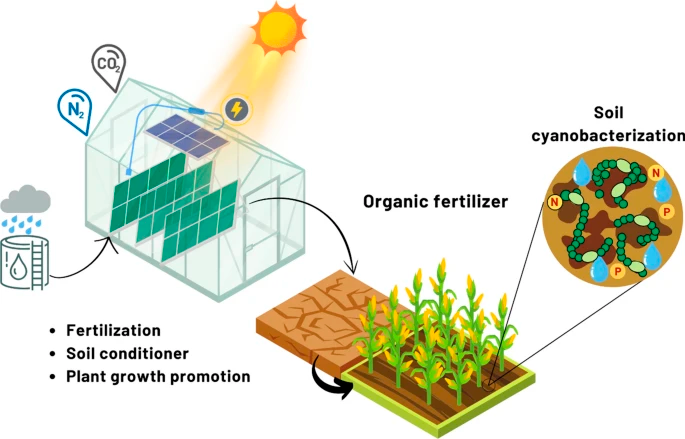Reviews in Environmental Science and Bio/Technology, Published: 16 May, 2024
Abstract
The Sustainable Development Goal 2 of the United Nations towards 2030 aimed to end hunger, achieve food security and improved nutrition, and promote sustainable agriculture. According to the 2023 report by the Food and Agriculture Organization, the world is not on track to end hunger or promote sustainable agriculture by that time. Climate change acts as a “crisis multiplier”, resulting in lower food productivity and higher prices, contributing further to poverty, hunger, and instability. The number of undernourished people in drought-sensitive and low-income regions of the world has increased this decade. In this review, we analyze the potential of microalgae and cyanobacteria to aid conventional agriculture in providing critical services such as carbon capture, wastewater management, food/feed, biofuels, and other higher value bioproducts. Specifically, we focus on the use of filamentous N2-fixing cyanobacteria for providing those benefits, even in semidry regions of the world with limited access to affordable nitrogen fertilizers to boost crop productivity. We comprehensively consider the eco-physiological basis of this potential, and the available alternative technologies for large-scale biomass production. We analyze venues for filamentous N2-fixing cyanobacteria applications in standalone processes, or integrated into more complex industrial symbioses, towards increased crop productivity, and water and N-fertilizer use efficiency. Throughout the text, we highlight aspects which still require further optimization, or technological breakthroughs, for full realization of the potential of filamentous N2-fixing cyanobacteria for contributing to Sustainable Development Goals.

Graphical abstract
